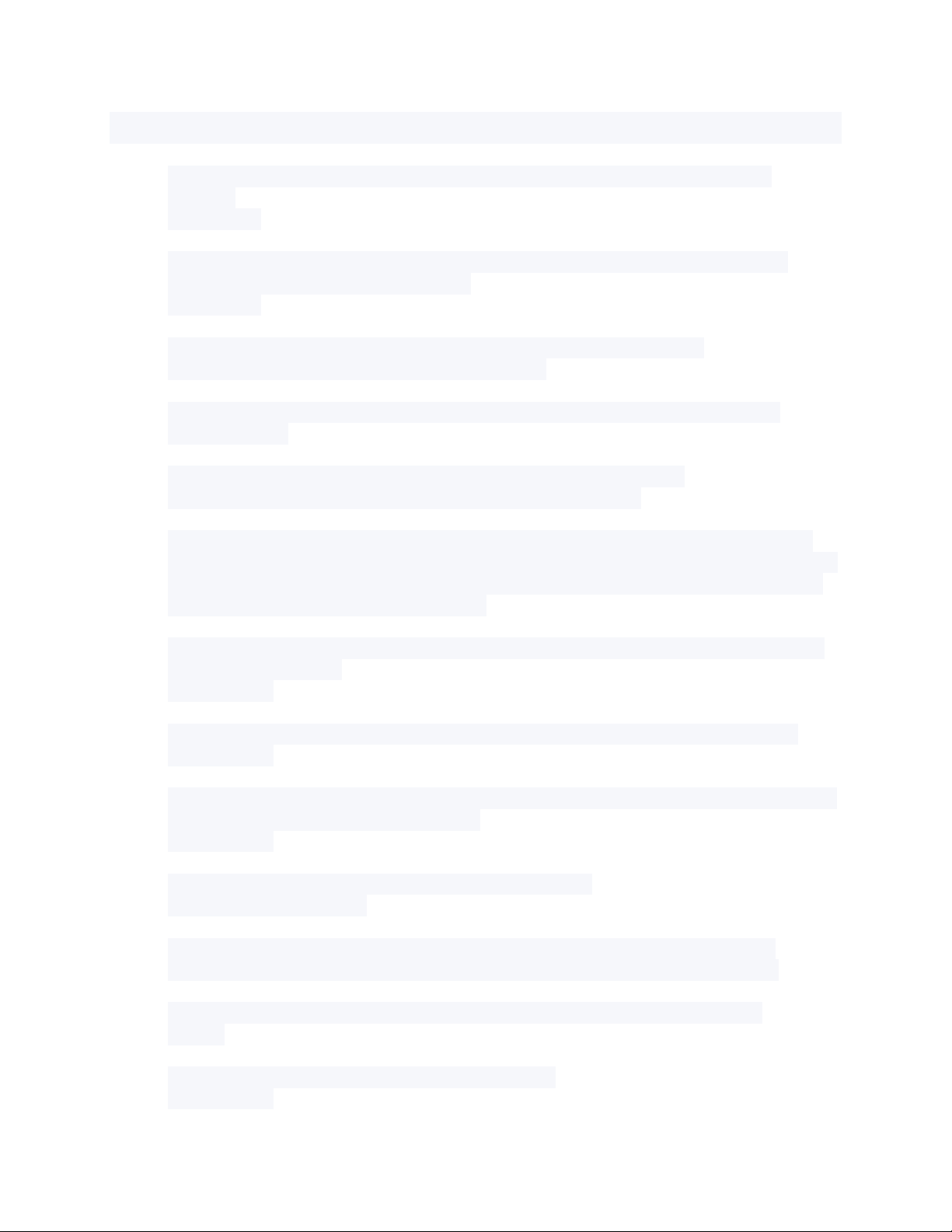
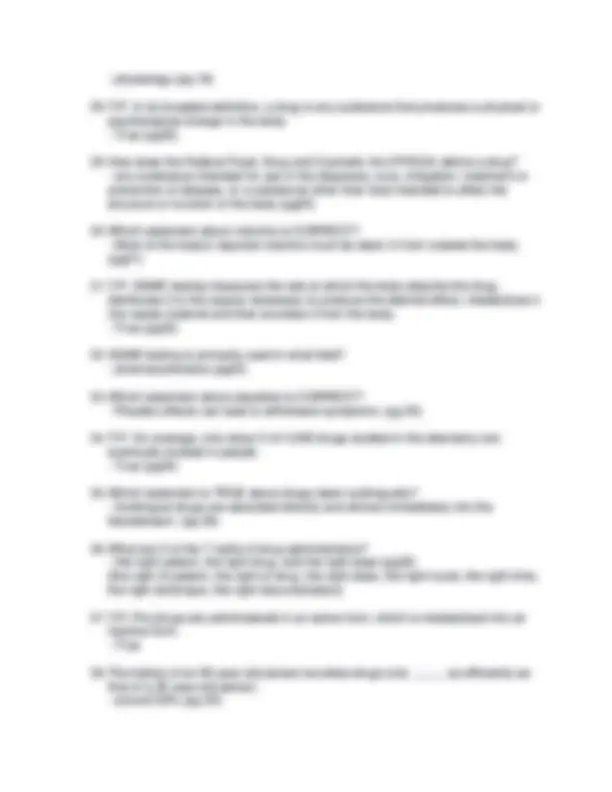
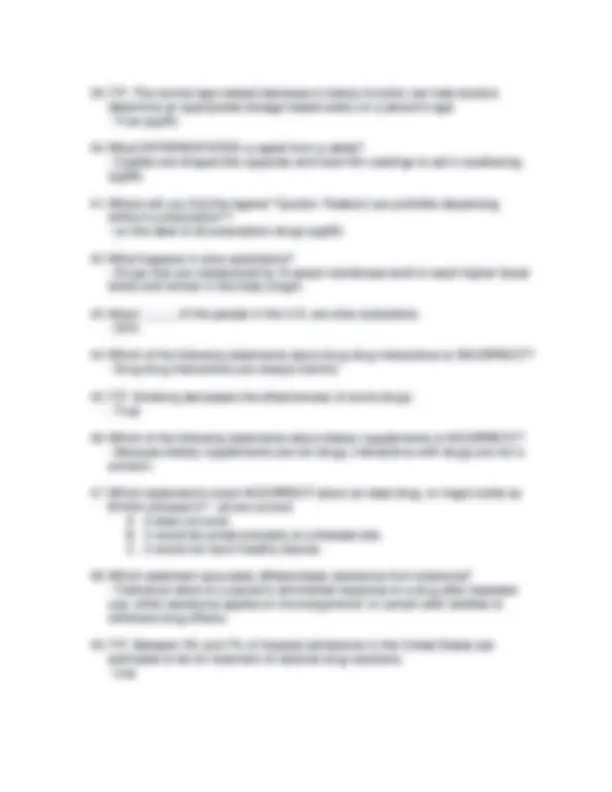
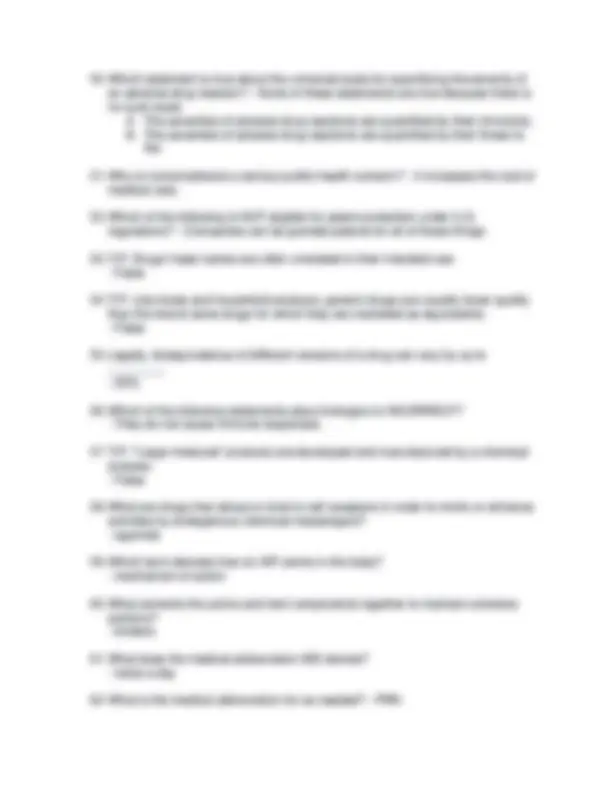
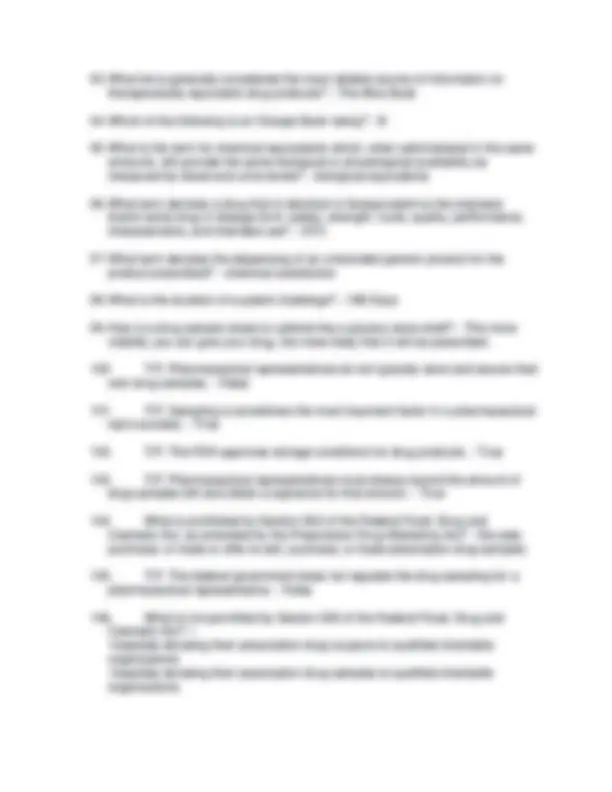
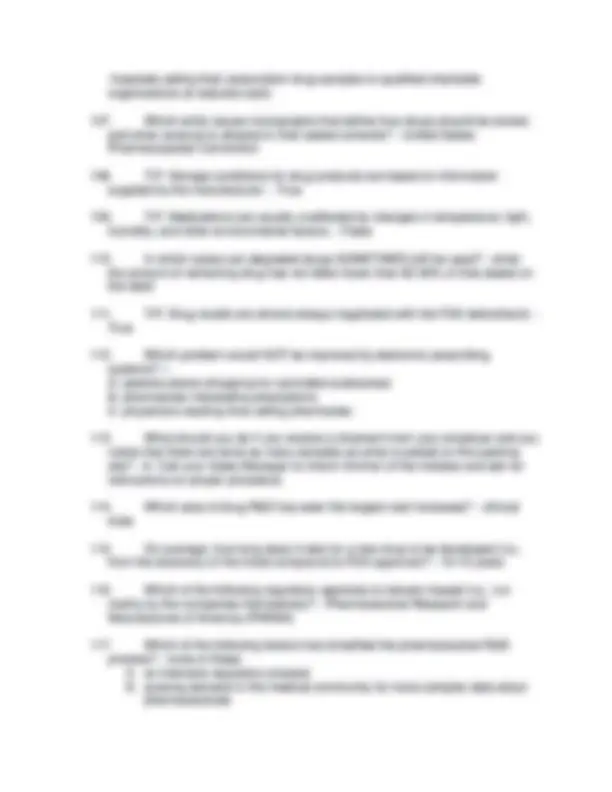
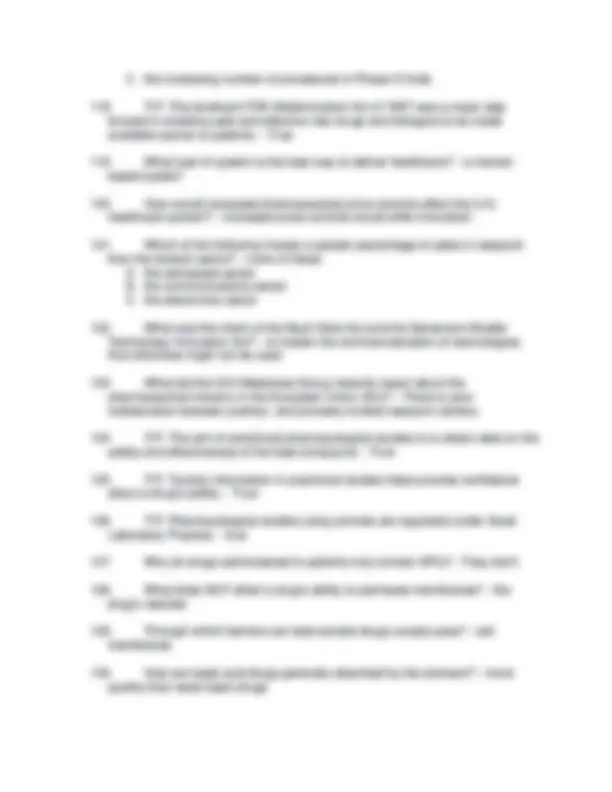
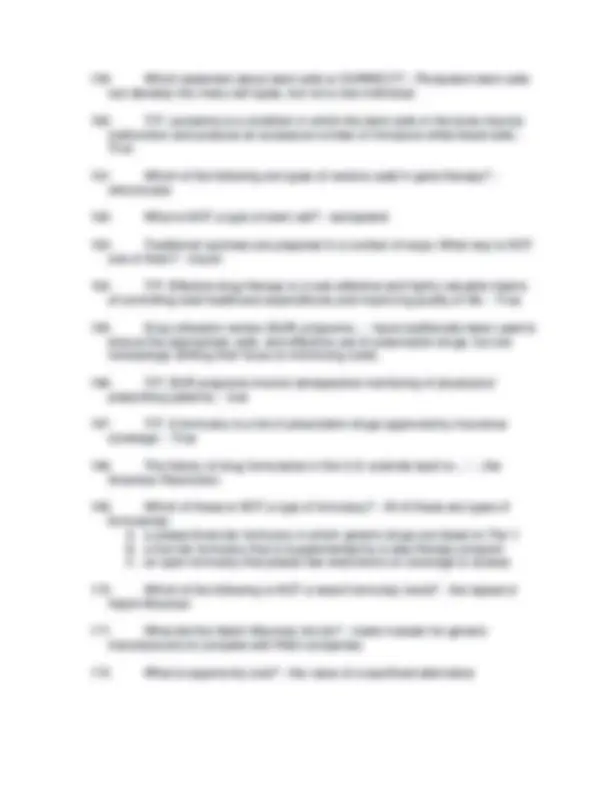
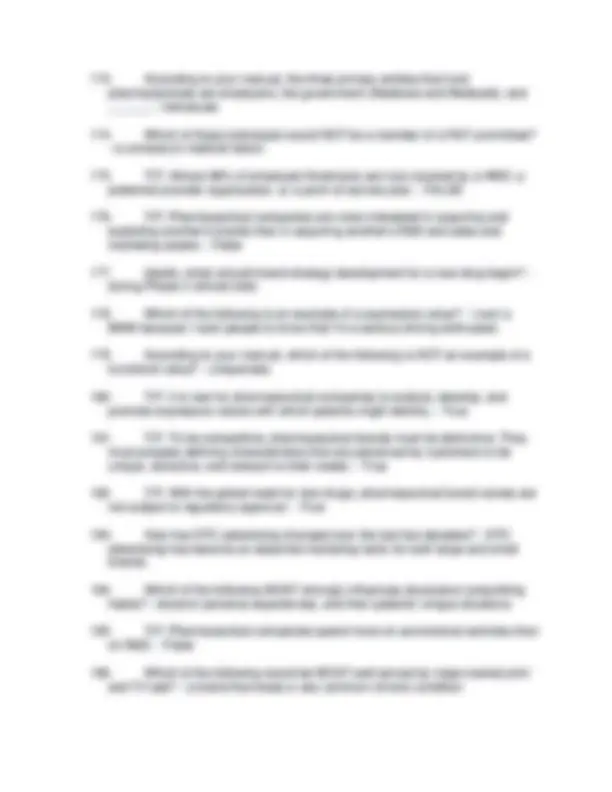
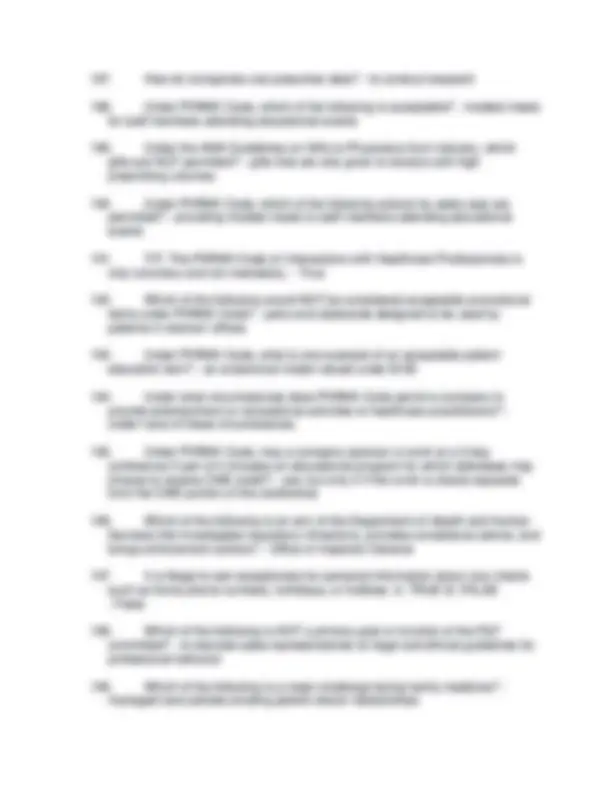
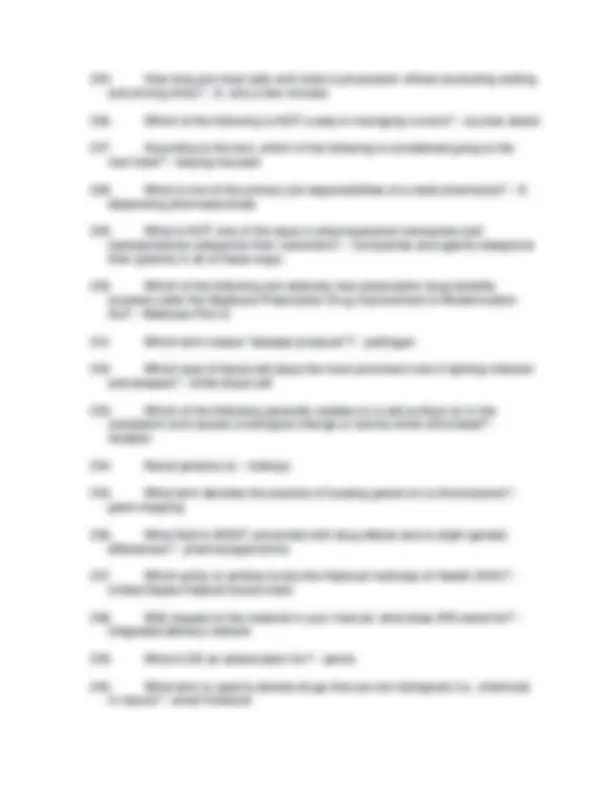
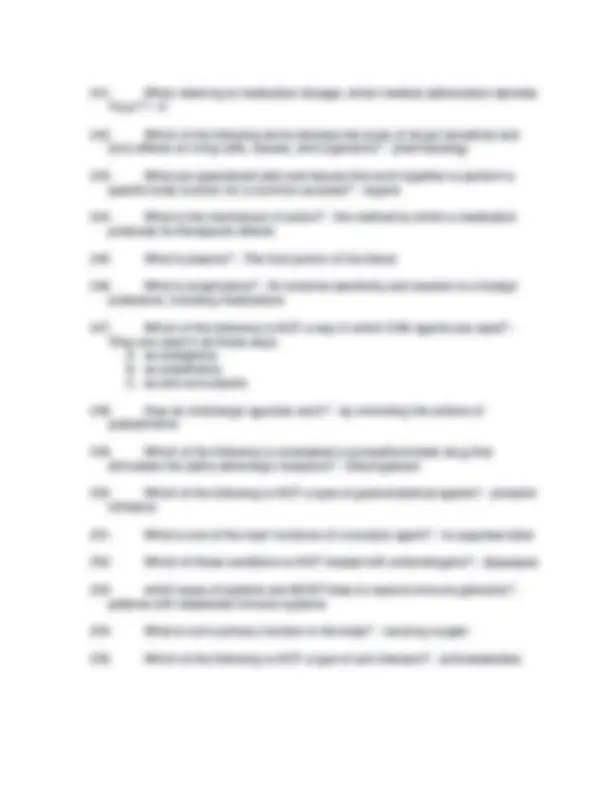
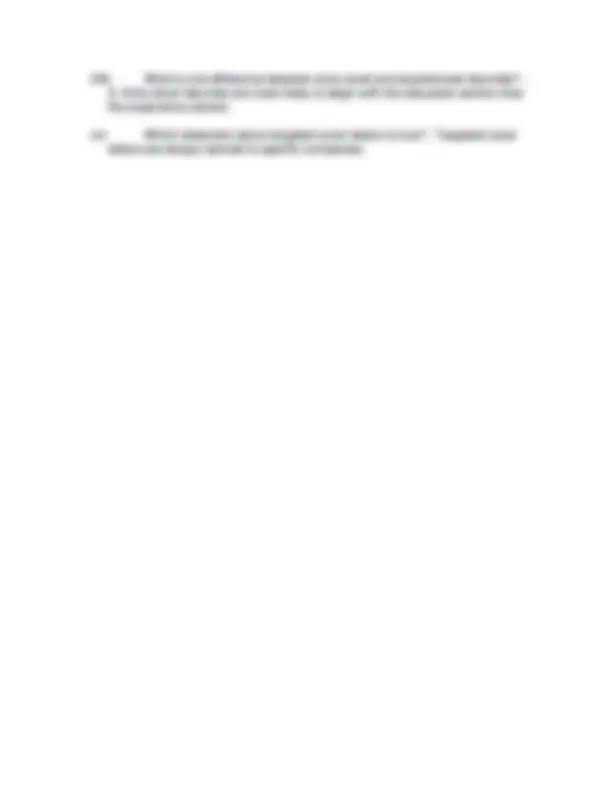


Study with the several resources on Docsity

Earn points by helping other students or get them with a premium plan


Prepare for your exams
Study with the several resources on Docsity

Earn points to download
Earn points by helping other students or get them with a premium plan
Community
Ask the community for help and clear up your study doubts
Discover the best universities in your country according to Docsity users
Free resources
Download our free guides on studying techniques, anxiety management strategies, and thesis advice from Docsity tutors
A comprehensive quiz covering various aspects of the pharmaceutical industry, including drug development, marketing, regulation, and administration. It provides multiple-choice questions with answers, covering topics such as drug discovery, clinical trials, drug interactions, and the role of pharmaceutical sales representatives. The quiz is designed to test knowledge and understanding of key concepts in the pharmaceutical industry.
Typology: Exams
1 / 20

This page cannot be seen from the preview
Don't miss anything!













- hospitals donating their prescription drug coupons to qualified charitable organizations - hospitals donating their prescription drug samples to qualified charitable organizations C. the increasing number of procedures in Phase III trials
- a company's medical liaison B. educational support C. therapeutic intervention